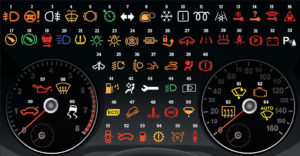Telling yourself or someone else who is stressed to “relax” is not enough. This article will show you exactly how to assess yourself, take steps to actively manage the areas affecting your stress, and to stimulate your brain centers to handle stress better. Our systems approach to identifying, measuring, and managing stress is simple enough to use regularly and impactful enough to help.
 Revving isn’t motion. All motors are machines that create motion from energy. Vehicle motors are engines. To run any vehicle engine, one needs fuel for converting inaction to action. In addition, it needs a way of handling resistance, oil is used to reduce the friction caused by various parts working in unison. The motive energy that is produced is applied to one or more moving parts that are ultimately acted upon in some way to propel. In our vehicle example, think in a macro sense of the wheels. Wheels, of course, are round in order to optimize the propelled motion forward. Without wheels, one’s motor is only revving itself up and spinning a number of other internal parts. Even though the motor may work well, revving only uses up fuel and oil and puts strain on all of the parts…but it still goes nowhere. When stressed, many try to change their focus or direction, which is analogous to spinning a vehicle with a revving engine to face another direction. It still goes nowhere. Motion forward is not the result of a working motor, but of its overall connection to wheels that can roll.
Revving isn’t motion. All motors are machines that create motion from energy. Vehicle motors are engines. To run any vehicle engine, one needs fuel for converting inaction to action. In addition, it needs a way of handling resistance, oil is used to reduce the friction caused by various parts working in unison. The motive energy that is produced is applied to one or more moving parts that are ultimately acted upon in some way to propel. In our vehicle example, think in a macro sense of the wheels. Wheels, of course, are round in order to optimize the propelled motion forward. Without wheels, one’s motor is only revving itself up and spinning a number of other internal parts. Even though the motor may work well, revving only uses up fuel and oil and puts strain on all of the parts…but it still goes nowhere. When stressed, many try to change their focus or direction, which is analogous to spinning a vehicle with a revving engine to face another direction. It still goes nowhere. Motion forward is not the result of a working motor, but of its overall connection to wheels that can roll.
Stress is Stressful. Duh. Now to extrapolate from our analogy. Your machine (motor, engine) is the part of you in which all of your roles and situations overlap. Your fuel is your life energy that is used for managing all of those areas. Your oil is your level of resilience, a learned skill that allows minor adjustments in real-time so as to avoid crisis. Your wheels are what equalizes and optimizes your path forward, even under high speeds, bumpy road conditions, or when making choices that turn your path in a drastically different direction. Many people feel trapped because they don't see how they can change the situation they are in that is stressful. Think, for example, of caretakers whose family members need constant care. However, what if the key to it all is balancing out only the internal areas of your M.O.T.O.R. system that need it? Suddenly it becomes much more managable, even when the stressful situation persists. In our vehicle situation, it would be like driving up a mountain road. Progress is made, but it is slower and done more attentively.
 Tip-Top Shape. To keep the ride smooth in any vehicle, the wheels must be regularly aligned, rotated, and balanced. And of course, keeping your vehicle in tip-top shape is much easier than having to get your life vehicle towed for service if you get stuck. To maintain the vehicle, regularly look at the indicators, listen to the motor, and feel the ride…these are all ways to avoid a preventable repair crisis no matter what the driving conditions are by addressing minor issues as they arise. Your motion forward is the result of the condition of the system itself and how well you observe the internal indicators, and not just the external conditions in which it operates. In other words, rain or shine, if the vehicle’s internal systems are working well together, one’s motion forward and navigational ability will be certain.
Tip-Top Shape. To keep the ride smooth in any vehicle, the wheels must be regularly aligned, rotated, and balanced. And of course, keeping your vehicle in tip-top shape is much easier than having to get your life vehicle towed for service if you get stuck. To maintain the vehicle, regularly look at the indicators, listen to the motor, and feel the ride…these are all ways to avoid a preventable repair crisis no matter what the driving conditions are by addressing minor issues as they arise. Your motion forward is the result of the condition of the system itself and how well you observe the internal indicators, and not just the external conditions in which it operates. In other words, rain or shine, if the vehicle’s internal systems are working well together, one’s motion forward and navigational ability will be certain.
Lights, Buttons, & Knobs – Oh, My! Normal stress is not just caused externally, but also by the system itself. Good stress can propel forward, remember, while bad stress harms and immobilizes. By the time one feels stressed in its chronic “bad” sense, it is often too late to make minor adjustments because the damage has been done to one’s health, emotional and processing brain function, & ability to make good choices. Many people know what they don’t want in life and to a lesser extent, what they do want. But the frustration being felt, the emerging “bad” stress, interrupts their decision-making and interpretive processes. Stress that is developing into chronic stress first affects brains so as to hinder its ability to process external experiences in their proper context. Many find themselves treating the indicators (headaches, exhaustion, weight loss/gain, etc.) without identifying that those indicators actually mean something. Second, the part of the brain that connects with others and makes one feel and trust most (frontal cortex, oxytocin) gets pushed out of the way by the fight, flight, fright chemicals that flood through the brain (amygdala, cortisol). The result is that external indicators are also shut out, misinterpreted, or seen as threats rather than proper indications. Keeping oneself in tune to the indications of stress, how one’s stress motor is running, and how smoothly one is moving forward will all help prevent expensive crisis repair costs if the engine breaks down.
 Managing stress means regular maintenance. Our Stress M.O.T.O.R. System puts two tools in your hands to indicate, measure, and move yourself forward more easily before chronic persistent “bad” stress takes a strong hold of your life. Using our tools, it is easy to assess where you are at any given time and have the ability to know what to do to manage your journey with less energy spent to do it and fewer costs later due to break-downs.
Managing stress means regular maintenance. Our Stress M.O.T.O.R. System puts two tools in your hands to indicate, measure, and move yourself forward more easily before chronic persistent “bad” stress takes a strong hold of your life. Using our tools, it is easy to assess where you are at any given time and have the ability to know what to do to manage your journey with less energy spent to do it and fewer costs later due to break-downs.
First is our Stress M.O.T.O.R. Development Wheel page, which guides you to both (a) indicate the level of your stress by category, and (b) to identify the interactive pairs in which you are most out of balance. Below are the M.O.T.O.R. categories and some questions to ask yourself that may help you rate your level of stress on the worksheet. Your stress motor is comprised of:
[dt_sc_one_fifth first]Motivation[/dt_sc_one_fifth]
[dt_sc_one_fifth]Obligation[/dt_sc_one_fifth]
[dt_sc_one_fifth]Thoughts[/dt_sc_one_fifth]
[dt_sc_one_fifth]Order[/dt_sc_one_fifth]
[dt_sc_one_fifth]Rest[/dt_sc_one_fifth]
[dt_sc_clear /]
[dt_sc_one_fifth first](Internal Pull)[/dt_sc_one_fifth]
[dt_sc_one_fifth](External Pull)[/dt_sc_one_fifth]
[dt_sc_one_fifth](Internal Logic)[/dt_sc_one_fifth]
[dt_sc_one_fifth](External Logic)[/dt_sc_one_fifth]
[dt_sc_one_fifth](Internal/External Reset)[/dt_sc_one_fifth]
[dt_sc_one_fifth first]Do I have goals, have I achieved goals, & do I create new ones to pursue?[/dt_sc_one_fifth]
[dt_sc_one_fifth]Are my commitment to others greater than or less than the commitments I make to myself?[/dt_sc_one_fifth]
[dt_sc_one_fifth]Would the conversations I have with myself internally offend someone else if it was said aloud?[/dt_sc_one_fifth]
[dt_sc_one_fifth]Are the first things I see in my environments at work or home the level of cleaning, sorting, or organizing?[/dt_sc_one_fifth]
[dt_sc_one_fifth]Do I plan activities I like to do and then do them?[/dt_sc_one_fifth]
[dt_sc_hr_invisible /]
[dt_sc_one_fifth first]Am I proud of myself, and what makes me most proud of me?[/dt_sc_one_fifth]
[dt_sc_one_fifth]Am I overscheduled?[/dt_sc_one_fifth]
[dt_sc_one_fifth]Am I a friend or a foe to myself?[/dt_sc_one_fifth]
[dt_sc_one_fifth]Do I correct others in conversation and advise others when they haven't asked?[/dt_sc_one_fifth]
[dt_sc_one_fifth]Do I intentionally plan periods of nothing?[/dt_sc_one_fifth]
[dt_sc_hr_invisible /]
[dt_sc_one_fifth first]What things are most inspiring and energizing to me?[/dt_sc_one_fifth]
[dt_sc_one_fifth]Do I voluntarily plan and contribute my time and resources for the agendas, mission, or needs of others?[/dt_sc_one_fifth]
[dt_sc_one_fifth]Do I internalize blame rather than letting each person or situation carry its own responsibility?[/dt_sc_one_fifth]
[dt_sc_one_fifth]Do I become hurt, defensive, insecure, or angry if others don't agree or my plans fall apart?[/dt_sc_one_fifth]
[dt_sc_one_fifth]Do I know how to disconnect from others, technology, and situations?[/dt_sc_one_fifth]
[dt_sc_hr_invisible_medium /]
[dt_sc_clear /]
Second use our Stress M.O.T.O.R. Tune-up worksheet to help you align, rotate, and balance yourself for your life’s road by tweaking action and behaviors in areas that most impact the categories you seek to adjust. Download both for free by clicking on the RED links. Generally, the lower your stress level in a category, the more satisfied you are in that area. Remember that there are no right and wrong answers, only “you” answers.
Were these tools useful? Share our article on social media using the shortcuts at the top of the article. Or post your own unique experiences and perceptions and tag @A2LAMPS. Thank you.




